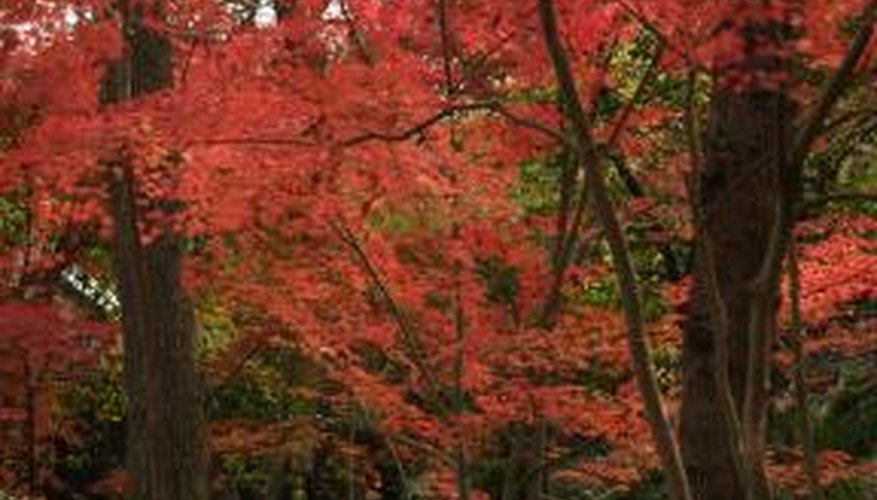If you see spindle-shaped bags that are 1 1/2 to 2 inches long on your Japanese maple tree's twigs, your tree likely has an infestation of bagworms. Bagworms are most common on coniferous and evergreen trees, but they also infest deciduous trees like the Japanese maple. Bagworm eggs overwinter inside the bags, the larvae hatching and feeding on the leaves during late spring. You can control bagworms on your Japanese maple tree using the proper methods.
- If you see spindle-shaped bags that are 1 1/2 to 2 inches long on your Japanese maple tree's twigs, your tree likely has an infestation of bagworms.
Handpick and destroy the bagworm cocoons or "bags" from your Japanese maple tree throughout fall, winter and early spring, before the larvae emerge. This is the best control method if only one Japanese maple or a few trees and shrubs are infested.
Apply an insecticide to your Japanese maple tree in late spring or early summer, after the larvae hatch but while the bagworms are still small---less than 1/2 inch long. You can apply an insecticide containing acephate, azadiractin or carbaryl to control bagworms, following the directions on the label carefully.
Apply a pyrethroid insecticidal product to control bagworms as an alternative to other types of pesticide chemicals. Pyrethroids like bifenthrin, permethrin, gamma-cyhalothrin and cyfluthrin are effective against bagworms, but only while the larvae are small during late spring or early summer. Apply the perethroid product according to the instructions on the label.
Apply a microbial alternative insecticide like Bacillus thuringiensis or spinosad to get rid of bagworms on your Japanese maple, if you don't want to use a chemical pesticide. Follow the application directions on the product's label, and apply the biological pesticide also while the larvae are small.
TIP
Inspect all landscape plants near your Japanese maple tree to detect bagworms. Look for the small cocoon bags that stand upright and resemble miniature ice cream cones. Remember to treat infested shrubs, trees and plants near your Japanese maple to effectively control the bagworm populations.
WARNING
Don't attempt to apply an insecticide or biological control spray to your Japanese maple when the larvae are larger than 1/2 inch long or when they're moulting. Mature larvae are difficult to kill using pesticides or biological controls, so your efforts may not be rewarded.
